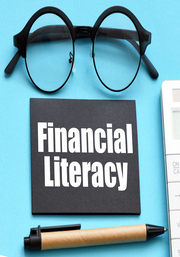The Best Financial Literacy Resources for Kids
Money management is one of the skills crucial for increasing savings, controlling money, and achieving short- and long-term financial goals. This is true for both adults and children. Is there a way to cultivate this skill among kids and teach complex financial concepts in a simple way?
In this brief guide, we will overview the top financial literacy resources, entertaining activities, and other ways to instill conscious financial habits in your child.
1. Apps
Financial apps for children and families are efficient tools for instilling healthy habits in your kids. With so many apps on the market, it is not always easy to choose the one that will suit your kid the best. Allowance and chore tracking apps, like Rooster Money, allow parents to monitor their kids’ spending and set up allowance payments and chores. You can also install the GoHenry app and tie it up to a kid-friendly debit card that allows parents to track their children’s spending habits.
Luckily, many apps come with educational and financial literacy resources that help children get a better grasp on how money works. Learn about borrowing money and interest associated with installment loans will also prepare them to have a well-rounded view of money into adulthood.
2. Podcasts
Among the most popular financial literacy podcasts for kids is Million Bazillion, often described by the NYT as “a godsend for anyone who knows a little kid with big questions about money.” From basic budgeting advice and how money works to explanatory episodes on cryptocurrency and inflation, Million Bazillion is a great way to introduce your children to financial topics. With trivia, celebrity cameos, and beginner-friendly explanations of complex themes, this podcast is a must.
3. Games
Financial games, like online or board games, introduce children to money management in an entertaining way. There is a wide array of games, ranging from pretend shopping games to playing money and plastic coins. Of course, one of the most popular games is Monopoly, a classic real estate board game favored among kids and adults alike. By counting, negotiating with other participants, paying attention to prices, and strategizing, Monopoly teaches kids money management and financial literacy in an engaging way.
There is also a simplified version of the game called Monopoly Junior, suitable for younger children. By gamifying the educational process, you will transform abstract financial concepts into a fun experience with real-life applications.
4. Books
If your child loves reading, books are a no-brainer. Plenty of finance books will help explain complex financial concepts like budgeting, investing, earning, or goal-setting in an entertaining and kid-friendly manner. From more advanced How to Turn $100 Into $1,000,000 and Finance 101 for Kids to kindergarteners’ level The Berenstain Bears’ Dollars and Sense, there are books for every age.
To wrap it up, financial literacy and money management are among the most crucial life skills that you can teach your child. By teaching the basics of budgeting, savings, spending, and investing, you will provide an important foundation and engrain healthy financial habits in your children.




